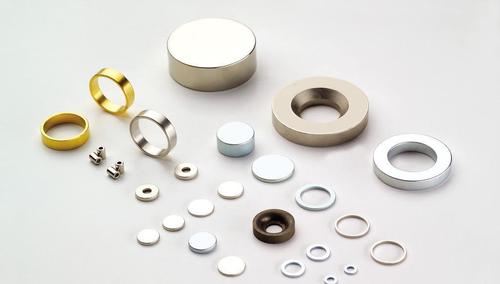Are Neodymium Magnets Stronger Than Ceramic Magnets?
In general, the magnetic induction near permanent magnets (AlNiCo alloy magnets, ferrite magnets, etc.) is about 0.4-0.7 tesla.

But rare earth magnets (neodymium magnets, samarium cobalt magnets) can produce a magnetic field of more than 1.4 tesla, which is much larger than the usual Al-Ni-Co or ferrite magnets.
Among permanent magnets, rare earth magnets produce the greatest magnetic field, which is much larger than aluminum-nickel-cobalt magnets or ferrite magnets. Rare earth magnets generally produce a magnetic field of more than 1.4 teslas, whereas ferrite or ceramic magnets produce only about 0.5 to 1 tesla. Two of the most common rare earth magnets are neodymium magnets and Nd-Co magnets. The two magnets contain Nd and Sm in rare earth elements, respectively. Rare earth magnets are very brittle and vulnerable to corrosion, so they are usually coated with other metals to protect themselves.
The Ferrite permanent magnet is also known as a Ceramic Magnet and even as a hard ferrite magnet. The name is interchangeable but they all refer to exactly the same material type. They are known as Ceramic Magnets because they are electrically insulating. Ferrite permanent magnets exist in two forms – Strontium Ferrite magnets and Barium Ferrite Magnets. The Strontium Ferrite Magnets are the most common.
Ferrite magnets are darker grey in color and are often referred to as having a “pencil lead” appearance.
Ferrite / Ceramic permanent magnets are technically known as hard ferrite materials (when exposed to a brief external magnetic field, the material retains magnetism due to having high coercivity, Hc). They are not the same as soft ferrite materials as used in transformer cores (which do not retain magnetism after exposure to a brief magnetic field because soft ferrite materials have low coercivity). The high coercive force of Ferrite Magnets means they are classified as hard materials, like all the other permanent magnets.
Ferrite magnets are extremely popular due to their characteristics. Ferrite magnets are corrosion free – for the long-term performance they are superb; if looked after they are capable of exceeding most products’ lifecycles. Ferrite magnets can be used up to +250 degrees C (and in some cases up to +300 deg C). Ferrite magnets are also low-cost, particularly in high-volume production runs.